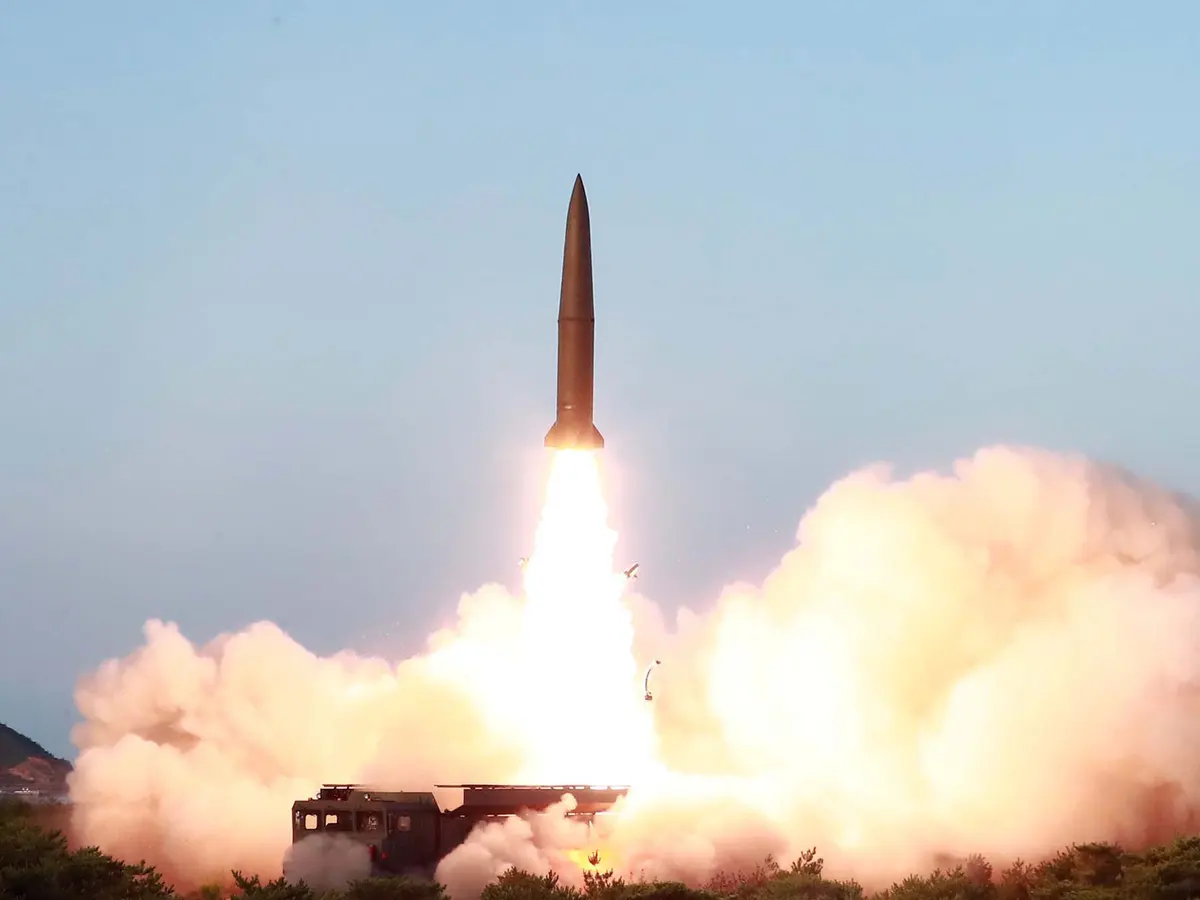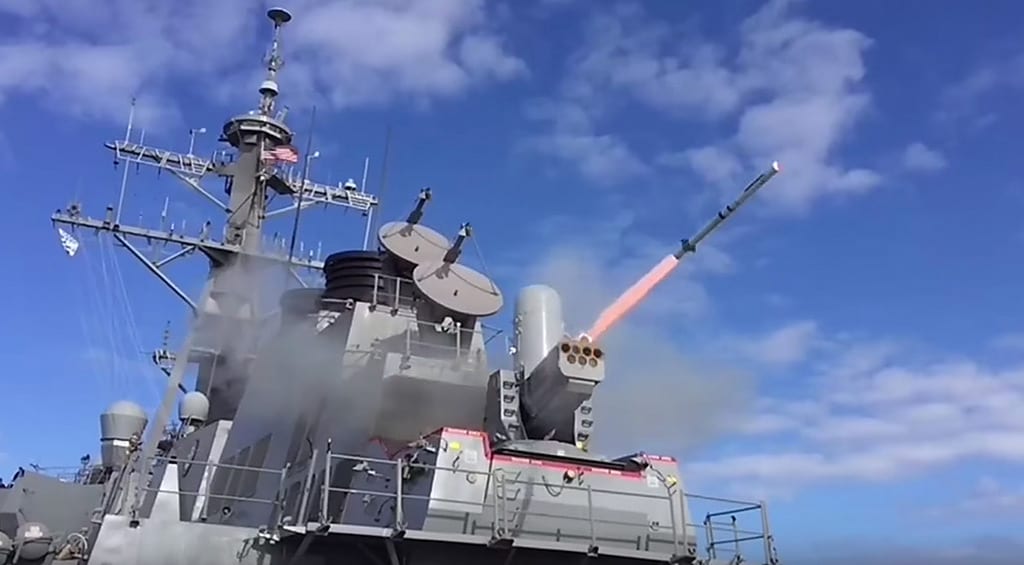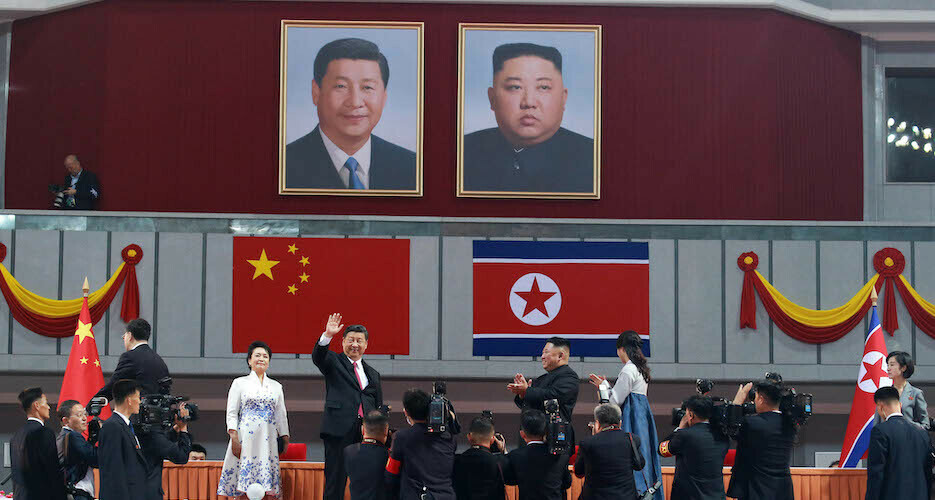Japan’s Vice Defense Minister, said the North Korean-launched two ballistic missiles that appeared to have landed outside Japan’s exclusive economic zone (EEZ). The ballistic missiles flew to a height of 550 km (342 miles) and had a range of 250 km (53 miles).
So far, no damage from the ballistic missiles has been reported, according to the Vice Defense Minister.
The North’s missile launch comes just days after the country tested a high-thrust solid-fuel engine, which experts say will allow for faster and more mobile ballistic missile launches as it seeks to develop a new strategic weapon and accelerate its nuclear and missile programs.
The test, which was overseen by North Korean leader Kim Jong Un, took place on Thursday at North Korea’s Sohae Satellite Launching Ground, which has been used to test missile technologies such as rocket engines and space launch vehicles, according to the official KCNA news agency on Friday.
Despite international bans and sanctions, North Korea has conducted an unprecedented number of missile tests this year, including an intercontinental ballistic missile (ICBM) capable of reaching the US mainland.
North Korea tested an intercontinental ballistic missile (ICBM) in November, which Japanese officials said had enough range to reach the US mainland and landed just 200 kilometers (130 miles) off Japan.
Japan builds ballistic missile defense
Japan unveiled its largest military buildup since World War II on Friday, a $320 billion plan to buy missiles capable of striking China and prepare it for long-term conflict.
The Maritime Self-Defense Force of Japan announced on November 21 that its two newest destroyers, the JS Maya and JS Haguro, had successfully conducted anti-ballistic missile tests off the coast of Hawaii.
The announcement means that Japan now has eight mission-capable ballistic-missile defense destroyers, and it comes as North Korea conducts a record-breaking series of missile tests, with over 50 missiles launched in the last two months and eight ICBMs launched since January.
On October 3, at least one of those ballistic missiles flew directly over the Japanese mainland, the first time in five years.
The launches have compelled Japan to reconsider its one-of-a-kind ballistic-missile defense system, which relies heavily on specially outfitted warships to intercept incoming missiles.
In 2004, Japan began developing its current BMD system. It has since evolved into a multi-tier BMD system that includes all three branches of Japan’s Self-Defense Forces.
The Aegis Ballistic Missile Defense System-equipped destroyers of the Japanese Maritime Self-Defense Force are tasked with intercepting ballistic missiles in their mid-course stage, when they are still outside the earth’s atmosphere.
Japan’s Air Self-Defense Force commands Patriot missile-defense batteries equipped with Patriot Advanced Capability-3 missiles designed to intercept ballistic missiles as they reenter the atmosphere.
Finally, Japan’s Ground Self-Defense Force is in command of Type 03 medium-range surface-to-air missile systems designed to intercept any missiles flying in medium-range airspace.
Four Kong-class destroyers
The interceptors are part of a vast network of satellites, radars, ships, and aircraft that monitor the area around Japan for potential threats. The data they collect is uploaded to Japan’s warning and control system, the Japan Aerospace Defense Ground Environment.
JADGE calculates a possible point of impact and orders relevant defense systems to prepare for intercept within minutes of detecting a threat. If necessary, JADGE will issue an evacuation order.
The most important component of Japan’s BMD system is its Aegis-equipped BMD ships. Four Kong-class destroyers (Kong, Kirishima, Myk, and Chokai), two Atago-class destroyers (Atago and Ashigara), and two Maya-class destroyers are in service (Maya and Haguro).
The Maya-class ships are the most recent, having been launched in 2020 and 2021. They are also the first BMD destroyers specifically designed for the BMD role. Others were retrofitted after they went into service.
The Mayas have 96 vertical-launch tubes that can fire a variety of anti-submarine rockets, anti-ship missiles (Type 90 or Type 17), and RIM-162 Evolved Sea Sparrow missiles. The interceptors — the SM-3 and SM-6 missiles — are the most important armament.
Maya successfully intercepted a ballistic missile outside the atmosphere with an SM-3 Block IIA missile, and Haguro intercepted another missile outside the atmosphere with an SM-3 Block IB missile in recent tests in Hawaii.
In a third shoot-down, Haguro intercepted a missile being tracked by Maya, demonstrating the JSDF’s long-desired integrated missile-defense capabilities.
New BMD destroyers
There are advantages to relying on maritime-based missile defense platforms. Because of their mobility, they can cover a larger area and get closer to enemy launch points. It also makes it more difficult for adversaries to target and destroy them.
By launching from the open ocean, BMD ships also ensure that no booster debris from SM-3 and SM-6 missiles lands in populated areas, which was a major reason Japan canceled the Aegis Ashore system acquisition in 2020.
Japan’s Ministry of Defense announced in September that it would build two new BMD destroyers.
The proposed ships would be 690 feet long, 130 feet wide, and 20,000 tons in displacement, making them the largest ships in the Japanese fleet since World War II. They would be larger than the Zumwalt-class destroyers of the United States and slightly smaller than Japan’s Izumo-class carriers, which are being converted to fly F-35B fighters.
Because the new ships are larger, the JMSDF will be able to send them on longer deployments, operate them in bad weather, arm them with more missiles, and outfit them with the massive SPY-7 radar.
The first ship is scheduled to be commissioned in 2028, followed by the second in 2029.
Relying on warships for ballistic-missile defense has its drawbacks, most notably the cost. Large, mobile ships with extremely sophisticated software and specially trained crews are required.
They wouldn’t usually venture far from their patrol areas in Japan, but each would require significant time in port for maintenance or crew training, implying that Japan would require a fairly large number of them to ensure that enough were deployed at any given time.
“The problem with sea-based missile-defense systems is that if you’re going to build really big expensive ships that are going to stay in one place, you might as well save the money and build these really big systems on land,” Zack Cooper, a senior fellow at the American Enterprise Institute, told Insider.
“You might need six ships to keep two on site at any given time, and building six expensive missile-defense ships is probably not the best way to waste pretty valuable shipyard time,” Cooper added.
The proposed 20,000-ton BMD destroyers are expected to cost up to $7.1 billion, a hefty sum given recent economic woes and fears of a global recession.
Defense against North Korea and China
That could explain why the Japanese government has reportedly reduced the size of the two new planned ships to roughly the size of the Maya-class ships. The decision on the ships will almost certainly be made clear in Japan’s new National Defense Program Guidelines, which are set to be released in mid-December.
However, Japan’s need for ballistic missile defense is becoming more pressing. North Korea has launched a record number of missiles this year, including IRBMs, ICBMs, SLBMs, and, most concerning for Japan, hypersonic missiles.
To save money and time, Japan may acquire two more BMD destroyers of an entirely new design or build more Maya-class vessels if it sticks with sea-based missile defense.
Tokyo may also reconsider and opt for Aegis Ashore. Maintenance and training on the land-based system would be easier, and it might even be cheaper: The program was expected to cost $4.2 billion over 30 years when Japan canceled it in 2020.
“In the North Korean context, where you basically know where the missiles are being fired from and where they are aimed at, it just doesn’t make a whole lot of sense to build a whole bunch of missile-defense destroyers just to keep two on station at any given time,” Cooper said.










